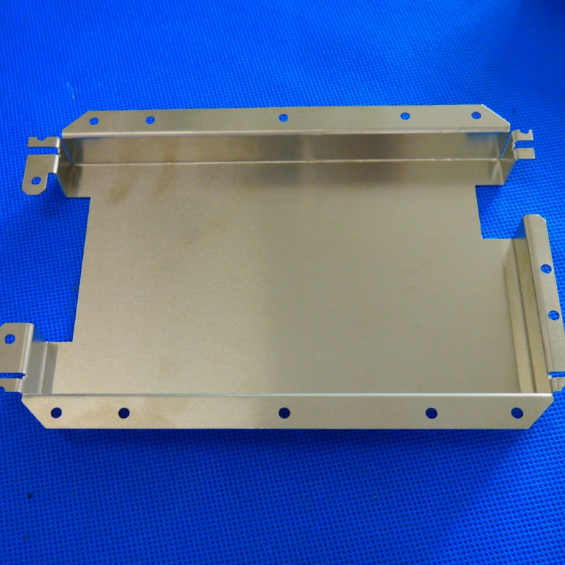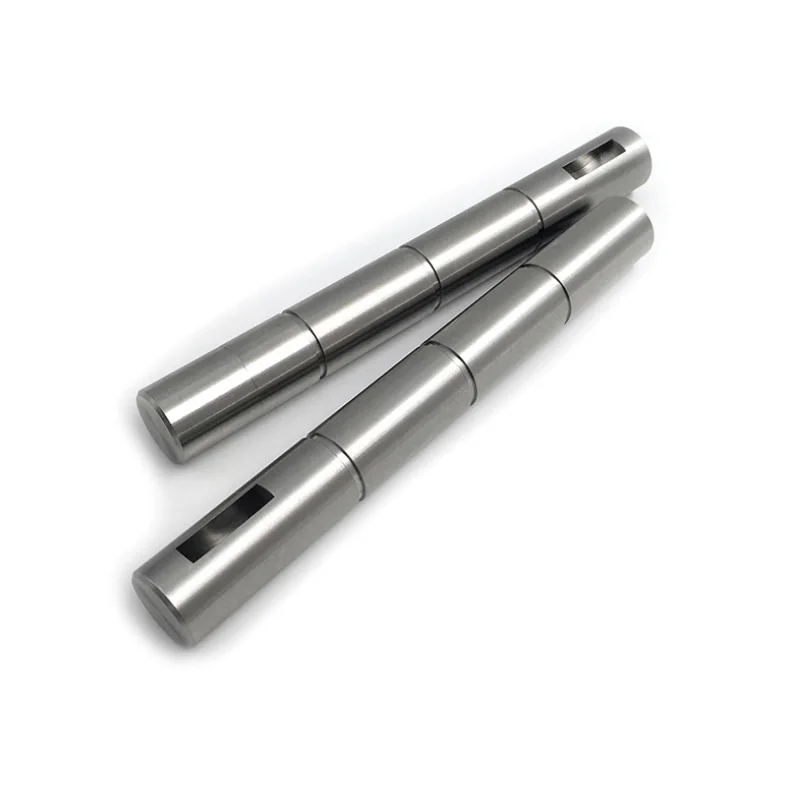Sheet metal parts production
Aluminum, Stainless steel, copper
Various metal sheet can be proceeded
- Overview
- Inquiry
- Related Products
What is Sheet Metal Fabrication?
Sheet metal fabrication means to the turning of flat metal sheets into metal products and structures. This metal forming process is not a single manufacturing process but as a collection of forming techniques.
The basic sheet metal fabrication techniques include cutting, bending, punching, stamping, welding, and finishing.
Sheet metal manufacturing is suitable for a range of metal materials. At RMT, we produce sheet metal components made from Aluminum, Steel, Stainless Steel, Copper, and Brass.
The manufacturing process is much common that you will encountere sheet metal fabricated product everywhere.
For example, home appliance, automotive, medical device or smaller parts like brackets or enclosures.

How does sheet metal fabrication work?
Idea and create drawings.
It begins with basic concepts of realistic requirements of project. Then you create a 3D model of desired sheet metal parts with wall thickness, bend radii, hole orientation, bend allowance, etc. Our engineers will develop drawings accordingly including manufacturing information of mateiral, tolerance, surface finishing, etc.

Prototype Development & Testing
Our engineers create the component’s geometry by methods cutting, bending, punching, stamping, and welding. And carry out surface finishes as well, to improve the aesthetics of sheet metal parts. After developing the prototype, clients will evaluate the prototype to ensure that it meets their requirements.
Full-Scale Production
A prototype that passes testing and meets the required specification will go into full part production. Process also involves cutting, stamping, punching, bending, curling, deep drawing, welding, hole making, fastening, threading and surface finishing treatment.
How does RMT make sheet metal components?
At RMT, Laser cutting enables a high degree of precision (+/- 0.1 mm) and is time-efficient. We also offer plasma cutting and waterjet cutting, which also offer high precision cutting.
RMT offers sheet metal bending procedures using U-shape dies, V-shaped dies, or channel shape along the straight axis in more ductile materials.
Deep drawing machinery is similar to that of the shear punch but this time there is more clearance between punch and die which creates the final wall thickness of the drawn section. The punch will also have a radius as opposed to a sharp edge to avoid marring the sheet metal. The part is held by a die and the punch draws into the sheet metal to stretch and form the material between the punch and die.
Making holes in sheet metal can be done with some of the previously mentioned processes including laser cutting and punching, but there are also other ways that will be mentioned here. A CNC mill, drill press, or hand drill may be utilized in order to make holes in material. A CNC machine will be the most precise out of these options, the hand drill will usually be the least precise.
Joining sheet metal parts, process includes fastenings, welding, and soldering. The most common type of fasteners for sheet metal are called PEM fasteners.

Common materials used for sheet metal fabrication
This section compares the properties of different grades of the standard sheet metal fabrication materials offered by RMT, including aluminum, stainless steel, mild steel, and copper. More general descriptions of these metals can be found on this materials page.
| Material + grade | Elongation at break | Machinability | Weldability | Corrosion res | Tensile strength |
| Aluminum 5052* | 7 – 27 % | Fair | Good | Excellent | 195 – 290 MPa |
| Aluminum 5754* | 10 – 15 % | Good | Excellent | Excellent | 160 – 200 MPa |
| Stainless Steel 304 | 45 – 60 % | Excellent | Excellent | Good | 480 – 620 MPa |
| Stainless Steel 316L | 30 – 50 % | Good | Excellent | Excellent | 480 – 620 MPa |
| Mild Steel 1018 | 17 – 27 % | Good | Excellent | Poor | 190 – 440 MPa |
| Copper 110 | 15 – 50 % | Poor | Moderate to Poor | Good | 220 – 230 MPa |
Surface finishes of Sheet metal
The metal surface finishes have both aesthetic and functional benefits. Including Sand Blasting, Powder coating, Anodizing, Polishing, Powder Coating, Anodizing, Chrome coating, Brushing, and electropolishing, etc.

| Finish | Description | Process |
| Bead blasting | Shooting glass beads or other abrasives at the part at high speed, resulting in a uniform matte or satin surface finish. | Deburrs |
| Removes tool marks | ||
| Adds uniform matte or satin surface finish | ||
| Helps to increase grip | ||
| Powder coating | Powder coating adds a thin layer of protective polymer on the surface of the part. | Adds decorative finish |
| Improves weather & corrosion resistance | ||
| Compatible with all metals | ||
| Higher durability than paints | ||
| Anodizing | This is an electrochemical process of placing a stable oxide coating on the material, usually aluminum. | Gives the material a smooth almost matte texture |
| Durable & aesthetically pleasing | ||
| Can be applied easily to internal cavities and small parts | ||
| Wide range of colors available | ||
| Chromate conversion coating | Known also as alodine or chemical film, this process immerses parts in a chemical bath until a coating has formed. | Protects from corrosion |
| Allows grounding currents to pass through | ||
| Paints adheres well, can act as primer | ||
| Increases durability | ||
| Brushing | Brushing is produced by polishing the metal with grit resulting in a unidirectional satin finish. | Removes machine marks |
| Brushing + electropolishing | Parts are brushed and then run through an electropolishing process – an electrochemical process used to polish, passivate and deburr metal parts. | Reduces roughness of parts |
| Deburrs | ||
| Makes surface smoother and shiny | ||
| Increases corrosion resistance | ||
| Produces more hygienic surface |
Sheet metal applications
Although, it is not just the enclosure, sheet metal has made a significant impact on almost all industries. Including Aerospace, Automotive, Healthcare Home appliances
At RMT, you can reap the benefits of the sheet metal processing methods from our technical and qualified service. With our service, you can get a sheet metal fabrication quote within 24 hours and lead times as quickly as 4 days, with DHL/FedEx Exress delivery in 3 days.
If you need sheet metal fabricated components, contact RMT now.

 EN
EN
 AR
AR
 BG
BG
 HR
HR
 CS
CS
 DA
DA
 NL
NL
 FI
FI
 FR
FR
 DE
DE
 EL
EL
 IT
IT
 JA
JA
 KO
KO
 NO
NO
 PL
PL
 PT
PT
 RO
RO
 RU
RU
 ES
ES
 SV
SV
 IW
IW
 LV
LV
 SR
SR
 SK
SK
 UK
UK
 GL
GL
 HU
HU
 TH
TH
 TR
TR
 FA
FA
 GA
GA
 CY
CY
 EU
EU
 BN
BN
 BS
BS
 LA
LA
 NE
NE
 SO
SO
 KK
KK











